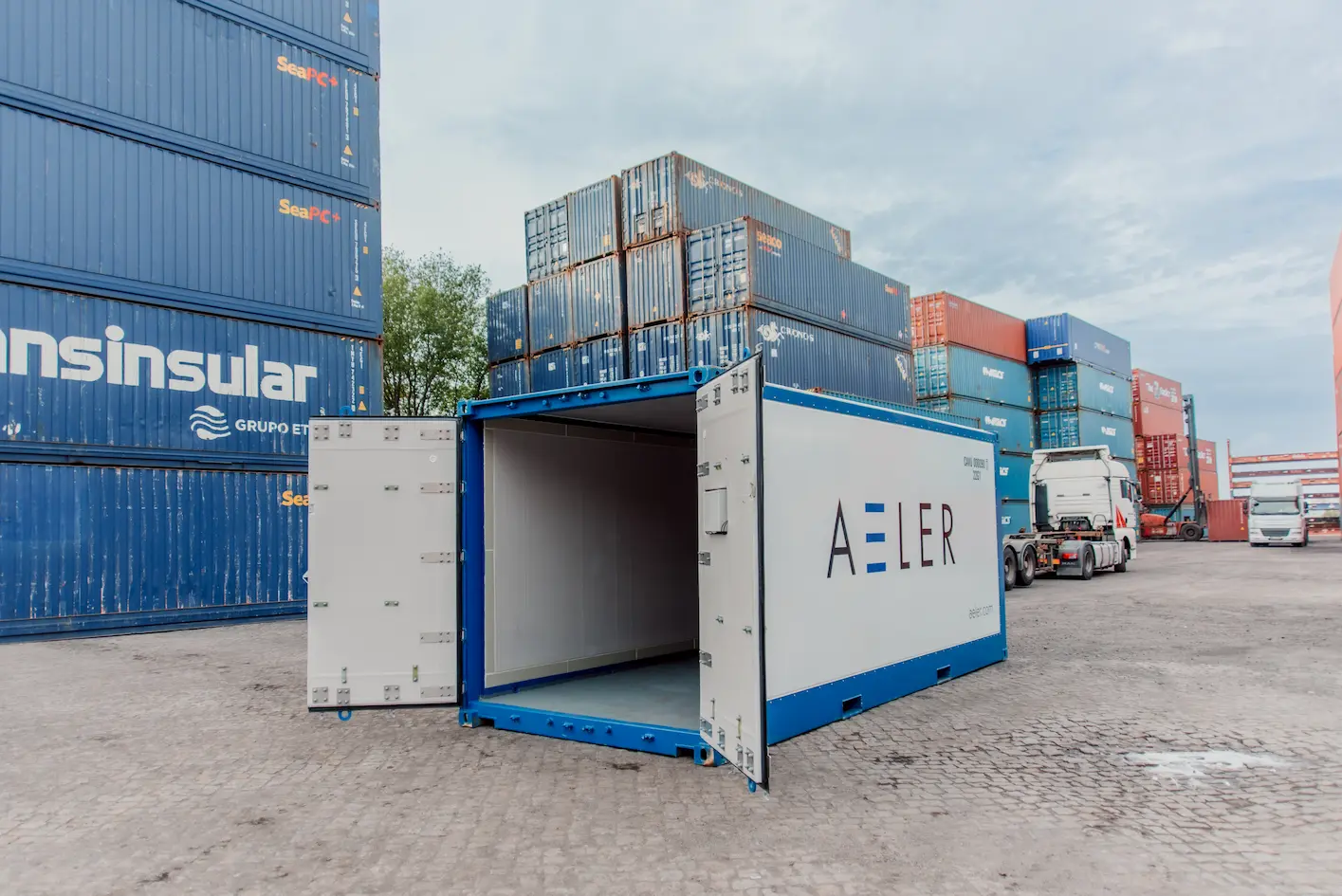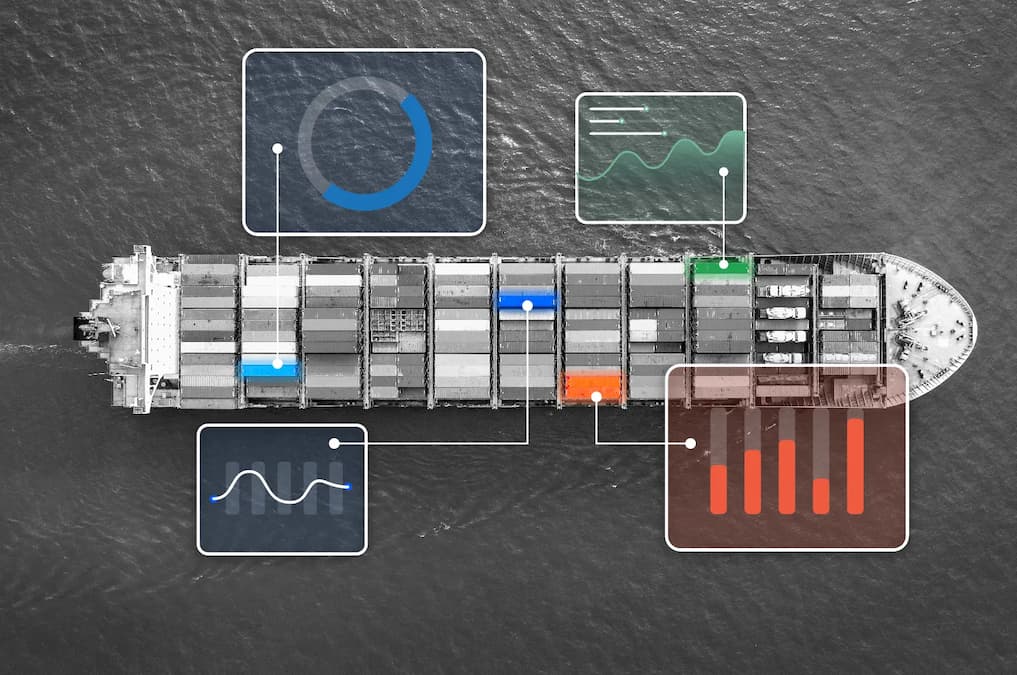Smart Container reshaping ports and customs operations

“Innovation is not only about technology”, this is the name of oneof the chapters of the recently published International Association of Portsand Harbors (IAPH) whitepaper: The mindset shift towards innovation in ports,in which I had the privilege to participate."
Following this statement, I believe it is time to move from talking about the IoT technology into the innovative solutions it enables, such as the ‘Smart Container’.
The Smart Container advanced features, once integrated in the maritime supply chain, can reshape Ports and Customs operations, improving them substantially, to efficiently handle the growth of international trade transported by containers.
The Smart Container
Smart Containers are shipping ISO containers used in freight and logistics that are equipped with IoT technologies and a range of sensors and devices. It can detect door opening, provide precise GPS positions, measure temperature, pressure, humidity, luminosity, impact, container orientation, VOC gas, and more.
The data collected by the Smart Container's sensors is transmitted to a central supervision platform, called the Smart Container's ‘control tower’ which provides a holistic perspective using additional information sources such as from AIS and shipping companies.
There are two types of Smart Containers:
- Regular container to which an IoT device is affixed permanently or for a certain period of time.
- Container in which the IoT hardware is embedded into the original container design. During the container manufacturing process.
The main difference between the two types is that the embedded Iot Smart Containers are“always smart” and require no logistics efforts after its construction, where as the affixed IoT Smart Container requires additional logistic efforts to install the IoT systems (devices and sensors) and dismount it at the end of the contract with the IoT service provider.
Reshaping Customs operations with Smart Container
Here are two specific uses cases in which the Smart Container can reshape Customs operations.
Door opening and real-time notification
Unauthorised door opening/closing can be used as an identifier for illegal activity with the container or/and cargo.
IoT sensors identify such an unauthorised action and report it in real-time through via the Smart Container’s control tower to Customs the following parameters:
- Door status: open/close
- Geographic allocation (latitude/longitude)
- Time stamp
These information layers give the context to the action and can beused for considering extra inspection in case of a door opening event outsideof the defined geographical zones of interest/geofences.
The absence of such incidents shows that the transportation wasn’t interrupted from the moment of loading the cargo and container closing,reducing its risk score and the need for physical inspection.
Track & trace and trigger event
Near-real-time reports regarding route deviation and crossing of the previously defined geofences can also be used as identifiers for illegal activity with the container or/and cargo.
IoT hardware, connected through GNSS antennas and global GSM roaming, periodically reports the current location of the container to the Smart Container’s control tower, which operates algorithms to identify geographical locations and the time of arrival or passing through the designated areas.
A suspicious route change or delay, which isn’t caused by traffic jams, might indicate an unauthorised activity with the transported cargo.
Deviations from the planned routes can be reported immediately through the Smart Container’s control tower to Customs and add a risk score to trigger an inspection.
Over the years, there have been a number of developments in container security devices used by Customs worldwide ranging from mechanical seals through to e-seals and, most recently, IoT-equipped seals. Many of these developments were incremental innovations - gradual, continuous improvements of existing products.
Following these use cases, Customs may consider disruptive innovation - technologies that are a break from the past, from existing solutions, using the Smart Container as an alternative to Customs seal. The valuable information received will be used to update the container’s risk profile - precious insights that will strengthen Customs' risk management algorithms. This means fewer containers to check and a higher hit rate when opening ones that are suspicious.
One of the key advantages of a Smart Container is the integration of the features of the previous technological generations with the new ones. Like some types of seals, it can identify unauthorised door openings and, in addition, it is capable of providing a context to these events. Geolocation, time stamping and indirect confirmations through additional sensors provide a new, holistic and unrivalled approach to risk management, inspection and Customs operations.
Additional benefits of the Smart Container, compared to seals:
- Minimises the logistic effort required to operate it.There’s no need for storing, receiving, returning or charging it.
The handling, data management, data transfer, monitoring and even the ‘virtual sealing’ is done in one place, the Smart Container’s control tower. - Because there are minimal logistic efforts, the operating cost is very low, included in the price of the container purchase/leasing by the economic operators.
- Eliminates the need for a cost-sharing agreement between the economic operators and Customs.
Reshaping Ports operations with Smart Container
When talking about automation in Ports the main topics discussed are autonomous ships, autonomous vehicles and automated cranes. We shall start talking of the Smart Container which can complete the Port automation puzzle.
There are various ways to integrate the Smart Container in the Port automation efforts:
Container number recognition
The Smart Container number is part of the information stored in its IoT and this information can be transmitted to any automated equipment in the port (crane, vessel, gate, etc.).
No more OCR to recognise the container number, avoiding OCR reading inaccuracies, typing mistakes and assuring more efficient operation in the port.
Approaching terminal announcement
As the Smart Container knows its exact location, it can send an update to the terminal that it is approaching and announce that it will reach the gate in a certain number of hours. The terminal can then verify if it has received all the necessary information for gate approval. If not, the terminal can promptly notify the shipper/freight forwarder to send the missing information before the Smart Container arrives at the terminal. This will prevent any delays at the terminal's gate.
Valuable information such as the number of the Smart Container which is approaching the terminal and the estimated time it will reach the port’s gate can help the terminal to better plan and allocate its resources to achieve amore efficient operation of the terminal.
Yard inventory count and registration
Suppose that because of a cyber-attack, the TOS database can’t be restored and as a result, there is a need to manually count and register the inventory of thousands of containers in the Port yard.
However, if the yard is filled with smart containers that can instantly transmit their identification numbers and locations, the TOS database can be immediately updated.
This can save many hours of manual work and enable a quick recovery from the cyber-attack.
What’s next?
In summary, using the Smart Container as part of the Customs and Port operation could improve the time efficiency of the processes and improve risk management.
It also encourages cooperation, transparency, and paperless data exchange between the stakeholders of the supply chain and reduces logistic efforts.
To explore the Smart Container benefits and to redefine Customs and Ports operations with Smart Containers, there is a need for Customs and Ports to continue implementing PoCs (Proof of Concepts) with Smart Container operators and lessors.
Published in Port Technology Magazine
Related resources


Smart containers: a comprehensive guide to the future of shipping
Smart containers: a comprehensive guide to the future of shipping


The new cool kid on the block: natively insulated shipping containers
The new cool kid on the block: natively insulated shipping containers
.jpg)
.jpg)




.jpg)